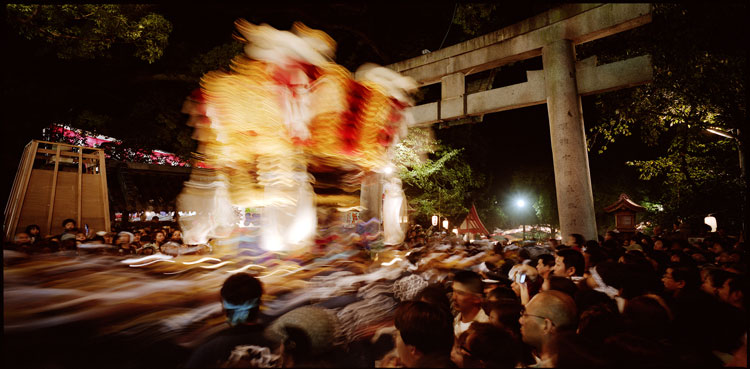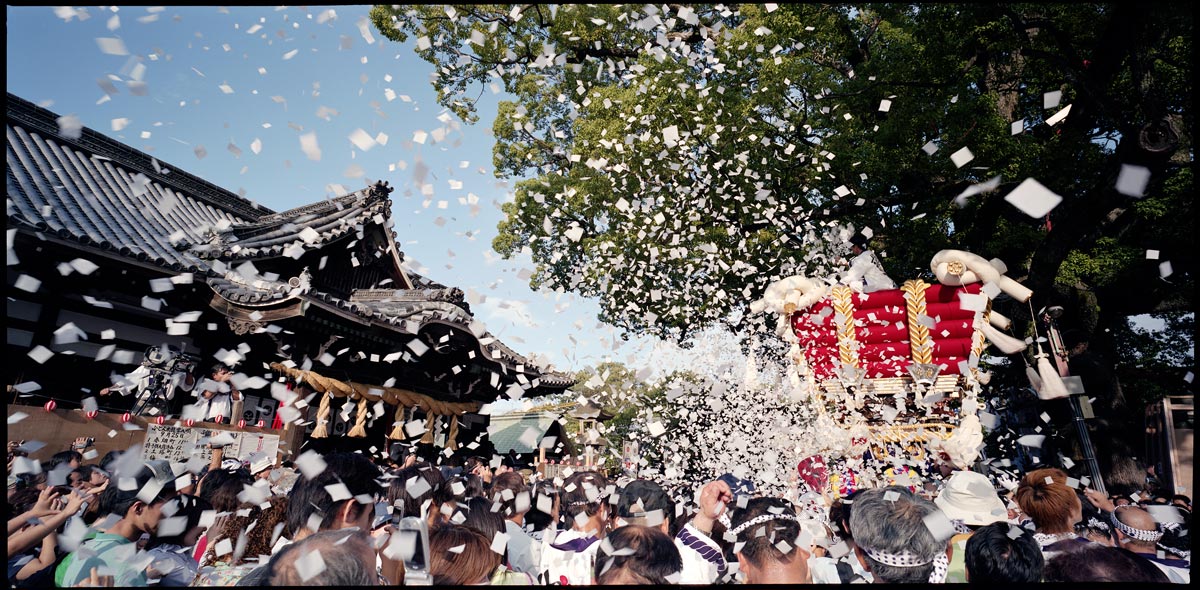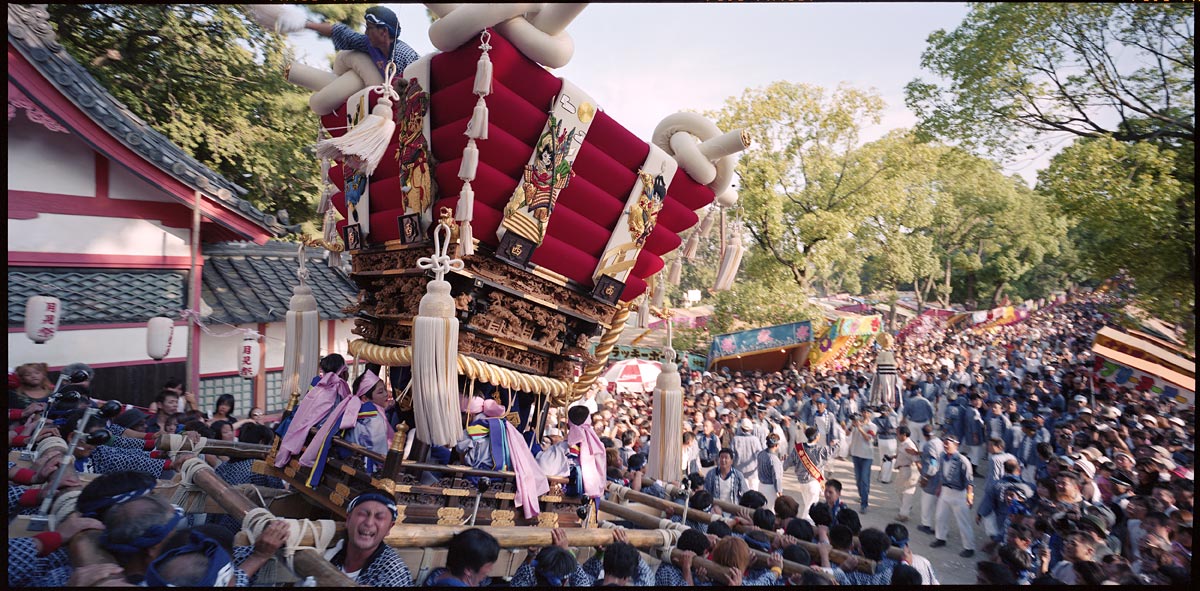How do you separate luck and talent? Talent can get you good images, competent images. But those magic moments, where do they come from? Personally, I feel those pictures are given, rather than taken. This image from Futon Daiko: A Japanese Festival is a result of many chance factors. The crowd was huge and pushed me back against a stone lantern; the force of the crowd split the lens hood on another camera in my bag. Needing some kind of support to make a long exposure—a tripod was not going to work—I clamped my camera on a steel I-beam supporting a branch of an 800-year-old camphor tree at arms length above my head. So far, so good. Just one problem. How do I frame the picture? I could not see through the viewfinder.
This image from Futon Daiko: A Japanese Festival is a result of many chance factors. The crowd was huge and pushed me back against a stone lantern; the force of the crowd split the lens hood on another camera in my bag. Needing some kind of support to make a long exposure—a tripod was not going to work—I clamped my camera on a steel I-beam supporting a branch of an 800-year-old camphor tree at arms length above my head. So far, so good. Just one problem. How do I frame the picture? I could not see through the viewfinder.
For those without a photography background, there is a technique or style known as shooting full frame. The photographer frames the image in the camera and does not recompose or crop later. I have used this style for my entire career—an unnerving way to work as there are no fixes later. So guessing the camera position, guessing the focus, guessing the exposure, here is the result, just as the camera saw it.
How much of this image is mine? How much luck? How much the good graces of the god Hachiman? I doubt the question can ever be answered. But I feel blessed to be there to take the picture, or maybe to receive it.

 The Futon Daiko festival at Mozu Hachiman Shrine in Sakai, Japan is a lunar festival, taking place in late September or early October on the weekend closest to the full moon. Nine town participate in this event.
The Futon Daiko festival at Mozu Hachiman Shrine in Sakai, Japan is a lunar festival, taking place in late September or early October on the weekend closest to the full moon. Nine town participate in this event.



